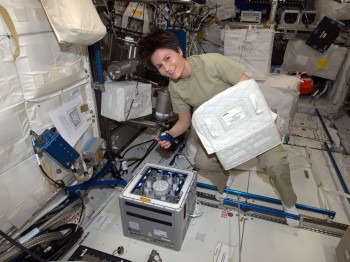One of the first things to do when the Soyuz spacecraft TMA-18M arrives at the International Space Station on 4 September is putting preserved human blood-vessels from the Endothelial Cells experiment from the Soyuz into an incubator waiting for them.
The ESA incubator-centrifuge, called Kubik, is a staple for biological experiments in space. It has flown to the Space Station since 2004 and combines a centrifuge with a heater element to keep samples at the right temperature. Kubik can spin samples to create artificial gravity levels, allowing researchers to know for sure if weightlessness or other space factors are influencing biological cells.
To prepare for the arrival of the new experiment Kubik needed to be set up. NASA astronaut Kjell Lindgren plugged in the unit ran some tests and later confirmed that Kubik was running at 37°C – not coincidentally the temperature of a healthy human being.
Kubik will be ready to receive the Endothelial Cell experiment tomorrow. It is important they are transferred quickly as the cells are stored at room temperature in the Soyuz which is not ideal for their preservation.
The team behind the experiment based in Pisa, Italy, are well prepared for many different scenarios however and all seems set for a successful experiment.




Discussion: one comment
Hello! Besides performing orbit- adjusting burns and carrying out the ‘Space Headaches’ experiment, what kind of activities are the 3 astronauts/cosmonauts undertaking on the Soyuz? Do they get to admire the view from the window or has the intense scientific work already started?
Thanks, and good luck to the crew!